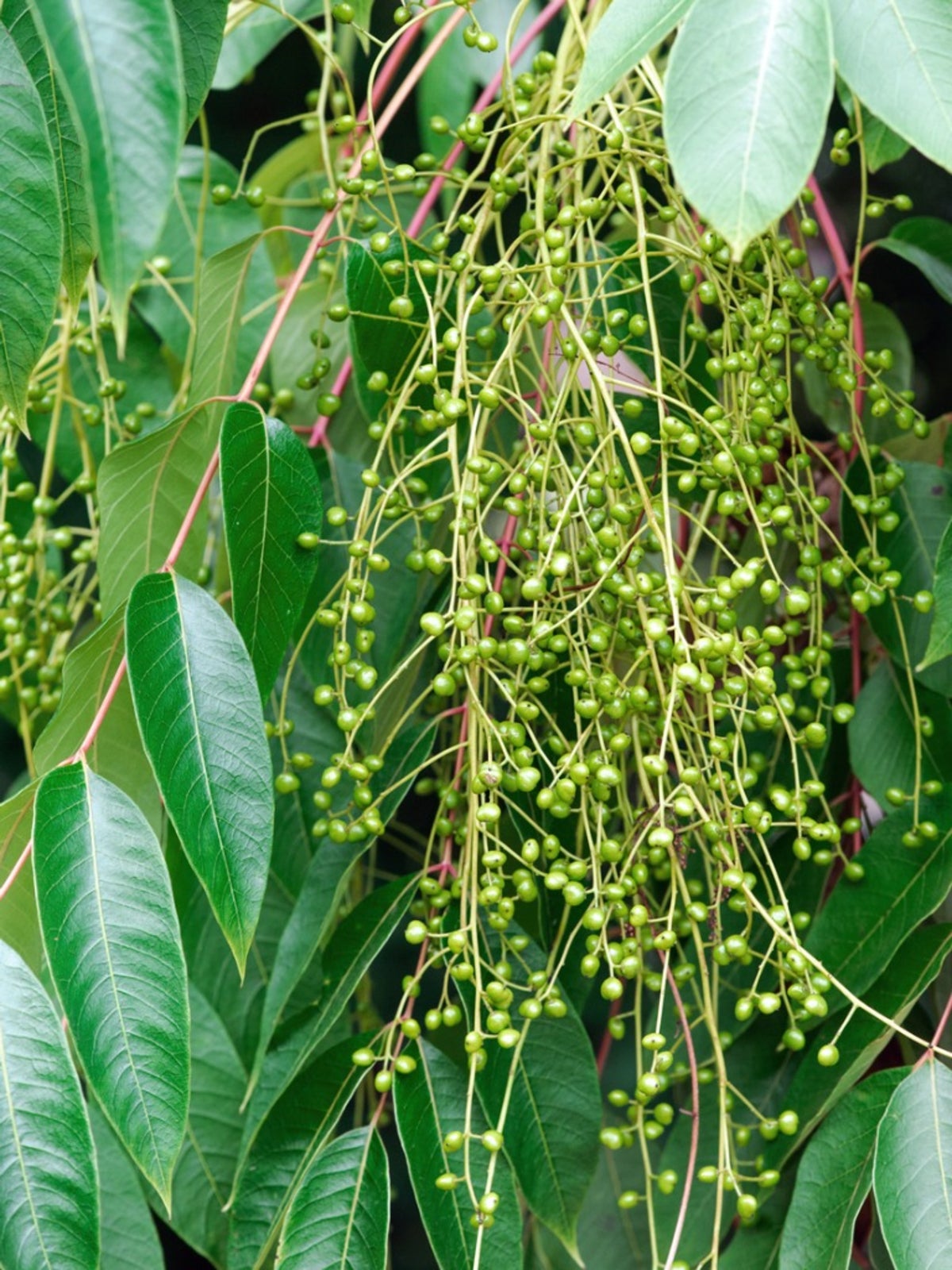What Is A Lacquer Tree And Where Do Lacquer Trees Grow


Lacquer trees are not cultivated very much in this country, so it makes sense for a gardener to ask: "What is a lacquer tree?" Lacquer trees (Toxicodendron vernicifluum formerly Rhus verniciflua) are native to Asia and are cultivated for their sap. Toxic in liquid form, the lacquer tree sap dries as a hard, clear lacquer. Read on for more lacquer tree information.
Where Do Lacquer Trees Grow?
It is not hard to guess where lacquer trees grow. The trees are sometimes called Asian lacquer trees, Chinese lacquer trees or Japanese lacquer trees. This is because they grow in the wild in parts of China, Japan and Korea.
What is a Lacquer Tree?
If you read lacquer tree information, you find that the trees grow to about 50 feet tall and bear big leaves, each composed of 7 to 19 leaflets. They flower in summer, usually in July. A lacquer tree bears either male or female flowers, so you must have one male and one female tree for pollination. Bees pollinate the flowers of Asian lacquer trees and pollinated flowers develop seeds that ripen in the fall.
Growing Asian Lacquer Trees
Asian lacquer trees grow best in well-drained, fertile soil in direct sun. It is best to plant them in somewhat sheltered locations since their branches are easily broken in strong winds. Most trees of this species are not grown in Asia for their beauty, but for lacquer tree sap. When the sap is applied to objects and allowed to dry, the finish is durable and shiny.
About Lacquer Tree Sap
The sap is tapped from the trunk of lacquer trees when they are at least 10 years old. Cultivators slash 5 to 10 horizontal lines into the tree trunk to collect the sap that comes out of the wounds. The sap is filtered and treated before it is painted onto an object. A lacquered object must be dried in a humid space for up to 24 hours before it hardens. In its liquid state, the sap can cause a bad rash. You can also get lacquer tree rash from inhaling the vapors of the sap.
Sign up for the Gardening Know How newsletter today and receive a free copy of our e-book "How to Grow Delicious Tomatoes".

Teo Spengler is a master gardener and a docent at the San Francisco Botanical Garden, where she hosts public tours. She has studied horticulture and written about nature, trees, plants, and gardening for more than two decades, following a career as an attorney and legal writer. Her extended family includes some 30 houseplants and hundreds of outdoor plants, including 250 trees, which are her main passion. Spengler currently splits her life between San Francisco and the French Basque Country, though she was raised in Alaska, giving her experience of gardening in a range of climates.